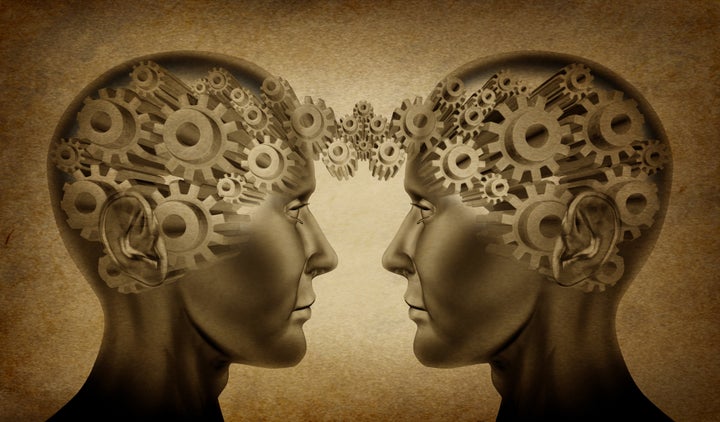
So are public relations and marketing, at least as we currently understand them. With rapidly expanding digital budgets, lower barriers of entry to create quality content and clients amenable to hearing ideas from anyone, the traditional concept of agencies doing just one thing is quickly fading. PR companies are creating 30-second spots, advertising agencies are running community management programs and digital agencies are managing large-scale marketing campaigns.
What do these changes mean for our industry?
Swimming in your lane doesn't work anymore
Agency convergence is happening, whether you like it or not. If your company feels nice and comfy with a small slice of the pie, you might find that pie stolen, along with your plate, fork and the tablecloth that you got for your wedding. If you aren't ready to create greater value in your client's portfolio, you might lose out to companies that will. For those willing to make a seat at the table for themselves and provide input on your client's core strategy, there's plenty of great work to be had.
Shrinking barriers of entry
Just as technology laid waste to the barriers of entry in the music and film industry, the Internet has spread knowledge and understanding of every facet of the work we do. A smart director and a group of freelancers can produce TV quality content at a fraction of the cost of a bloated in-house video team. Social media experts are a dime a dozen (Google "social media guru" and find out) and strategy is thankfully part of any project you'll come across (if it's not, run away). With anyone being able to do anything, forward-thinking agencies are focusing on talent and the sophistication of their process to differentiate themselves.
The creative gods are dying
AMC's Mad Men was the best and worst thing that happened to the creative. On the down side, everyone started to believe they were the next Don Draper and the level of creative arrogance reached an all time high. On the up side, it began the eventual process of breaking down the fourth wall of creative. Creative began to come down from its ivory tower as everyone saw how the nuts and bolts were put together. Thankfully, we're moving toward a world where good creative doesn't just come from high-powered ad firms, it comes from anyone with a good idea.
The era of good ideas
As the walls of creativity are being broken down, clients are beginning to accept good ideas, regardless of the source. A small boutique firm comes up with a killer Twitter campaign? They get the contract. An old-school advertising firm just hired a great community management team? Green light. As clients see fewer and fewer differences between their advertising, marketing and public relation agencies there will be more and more competition to put forward good ideas. And that's a good thing for everyone. Instead of getting just one viewpoint from an agency, smart clients will get multiple perspectives and choose which one works best for them. And instead of being forced to swim in one lane, agencies will be free to compete for multiple projects.
Online/Offline doesn't exist
We're often presented with a false choice between an online or offline campaign. People don't live in an online or offline world, they just live. We can't live in a binary world because our customers certainly aren't. We need to acknowledge that people don't think in terms of offline or online, they just engage with good content, regardless of its source.
What it all means.
It's not all bad news. The new digital ecosystem holds many opportunities for companies, big and small.
● Think big - Agencies that are able to make smart recommendations to a company's core business practice are going to get a larger seat at the table. As the industry moves toward large-scale multi-channel campaign agencies that are able to step up and provide scale at efficiency are going to win out.
● Rethink your team - If you told your client the person in charge of their media planning had no relevant experience, how would go down? That's exactly what many agencies are doing with their digital teams. Account managers without any grounding in digital best practices are being put in charge of purely social campaigns. The sooner your agency recognizes digital needs to lead digital, the sooner you can change your organizational chart. If you don't, your client might do for you in a few years when they go with a smarter, more agile competitor.
● Strategy and process win long term - Anyone can come up with one good idea, it takes discipline to come up with a good idea, over and over again. Having a smart group of talented people isn't enough anymore. You'll need a fluid, smart, effective process that everyone follows to differentiate your work from the herd.
● Digital isn't a vendor, it's core to what you do - If you think digital is a line item you're forced to add into a new business proposal, you've already lost the account. For the majority of projects, digital is your campaign. Integrating digital is no longer something you can just tell your clients; it's essential to competing in today's marketplace.
● Clients are getting savvy, step up your game - Digital is no longer a niche-marketing tool, it's entirely mainstream. The elderly grandmother, tween and Suit in the audience of every SXSW audience speaks volumes. As our clients begin to catch up our understanding of the digital ecosystem, we need to ensure we're constantly adding value to stay relevant. We can't rest on our laurels and talk about two-way engagement when it's already the norm. In order to stay relevant we need to stress our ability to put together large-scale campaigns that integrate multiple channels, create awesomely engaging content and keep adding value to our customers.